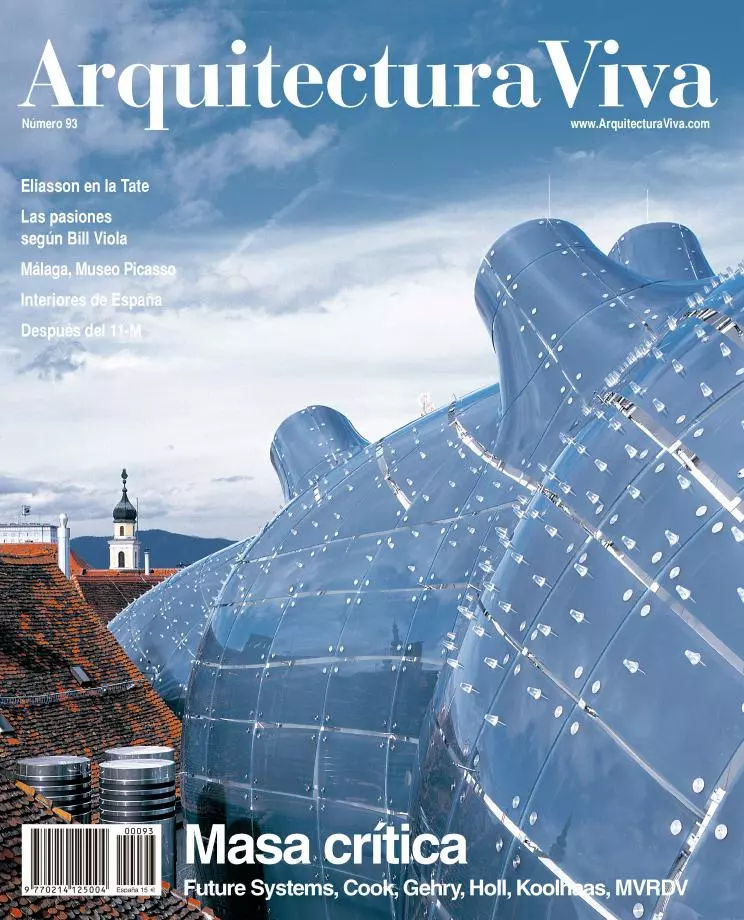
Architecture seems to have reached its critical mass: that volume from which the haphazard collisions among particles provoke a chain reaction and the subsequent explosion of its core. As in restaurants where a noisy table forces the rest to speak louder, so that soon all the guests are raising their tone and nobody can hear anything, the semantic shouting of contemporary projects has given rise to a screaming competition and an acceleration of the expressive collisions that, by multiplying their effects with the fuss of media, place this discipline on the threshold of explosive disintegration. In the popular science fiction movie of the fifties, the blob stirred panic both for its formless condition and for its uncontrolled growth, and the two circumstances are reproduced today in the random volumes and agitated blobs of a bulimic architecture.
Swollen like a wineskin by advertising and spectacle, this utilitarian and artistic activity floats lightly in the faded sky of balloons, watching the industrious swarm of busy crowds with the olympic disdain of Harry Lime from the top of the Prater’s ferris wheel. Filled with hot air or flammable helium, its bloated forms evoke economic pathologies of different nature, but equally devastating: like a bubble produced by opulent prosperity, its obese increase threatens with the catastrophic burst that periodically drains of humors the overheated and feverish markets of stocks or real estate; and as a symbolic coin minted to excess, its loss of significant value accelerates exponentially until it reaches the hypnotic vertigo of a hyperinflation that devaluates the impact of architectural works to the negligible level of Weimar bills.
In this incandescent situation, where the abuse of accidents only brings fatigue, and the background noise is so loud that the attention of the global theater can only be attracted with apocalyptic incidents, architects raise their bets like compulsive gamblers, and the racket of casinos erases the communicative existence of silent, sedate and safe architectures. The defense of excess initiated by Venturi when he replaced the miesian ‘less is more’ with the controversial ‘less is a bore’ (extended by Koolhaas with words and facts in his weary criticism of the ‘miestakes’), leads to a neo-baroque scenario, crammed with gestures and signs trying to rise over a confusion of elementary particles in a turmoil of collisions; more is more, but never enough. The temperature of the reactor is still going up; someone ought to put graphite bars in this critical mass.





